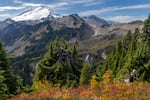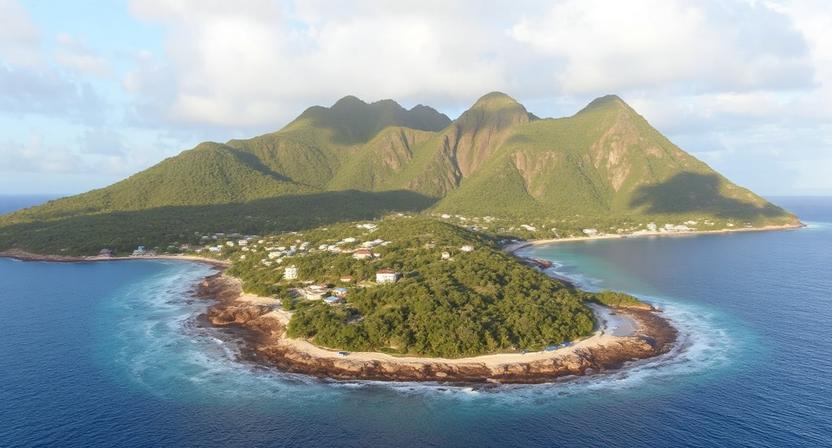Forest Service restarts effort to change decades-old Pacific Northwest forest policy – Oregon Public Broadcasting – OPB

Report on the Revision of the Northwest Forest Plan and its Implications for Sustainable Development Goals
1.0 Introduction and Background
A multi-year initiative to amend the Northwest Forest Plan, a foundational policy governing 25 million acres of forest land in Oregon, Washington, and northwest California, is being restarted by the U.S. Forest Service. This report analyzes the revision process, stakeholder conflicts, and the significant implications for achieving several United Nations Sustainable Development Goals (SDGs), particularly SDG 15 (Life on Land), SDG 8 (Decent Work and Economic Growth), and SDG 16 (Peace, Justice and Strong Institutions).
2.0 The Revision Process and Institutional Framework
The U.S. Forest Service is retracting a draft environmental impact statement released in November 2024 to issue a new draft amendment. This decision resets a process that had previously involved extensive public and stakeholder engagement.
- Initial Process: The previous effort included dozens of outreach meetings with tribes, an advisory committee, and the public, culminating in a draft that received over 3,400 comments. This aligns with the principles of SDG 16 (Peace, Justice and Strong Institutions), which calls for inclusive and participatory decision-making.
- New Process: The Forest Service plans to issue a “revised draft environmental impact statement” in the fall, followed by a 90-day public comment period. The stated goal is to refine definitions of forest types and clarify timber opportunities.
3.0 Stakeholder Perspectives and SDG Alignment
The decision to restart the amendment process has elicited varied responses from key stakeholders, highlighting a tension between different Sustainable Development Goals.
3.1 Environmental Groups: Prioritizing SDG 15 (Life on Land)
Environmental organizations express concern that the new draft will prioritize logging over conservation, directly threatening the objectives of SDG 15. Key concerns include:
- Biodiversity Loss: Increased logging in mature and old-growth forests could harm vulnerable and near-extinct species, such as the spotted owl, undermining Target 15.5 (take urgent and significant action to reduce the degradation of natural habitats, halt the loss of biodiversity and, by 2020, protect and prevent the extinction of threatened species).
- Ecosystem Protection: The potential weakening of the “Survey and Manage” program, which requires surveys for rare species before logging, is seen as a direct threat to forest ecosystems.
3.2 Timber Industry: Advocating for SDG 8 (Decent Work and Economic Growth)
Timber industry representatives welcome the revision, arguing the current plan fails to support local economies and sustainable resource management. Their position aligns with SDG 8.
- Economic Viability: Groups like the Douglas Timber Operators and the American Forest Resource Council call for a revision that prioritizes “sustainable timber production” and supports the “world class forest products infrastructure,” contributing to economic growth and employment (Target 8.2).
- Sustainable Management: They advocate for “dynamic forest management” to improve forest health and reduce wildfire risk, which also connects to SDG 11 (Sustainable Cities and Communities) by protecting communities from natural disasters.
3.3 Tribal Nations: Emphasizing SDG 10 (Reduced Inequalities) and SDG 16
The initial amendment process was noted for its “tribal-centric effort,” which sought to incorporate Indigenous knowledge and rights over ancestral lands, a key component of SDG 10 (Reduced Inequalities) and SDG 16. The restart has caused concern among tribal representatives that this inclusive approach may be diminished.
- Inclusive Governance: The creation of an advisory committee with multiple tribal representatives was a significant step toward participatory governance.
- Disenfranchisement Concerns: A former tribal representative on the committee expressed that it was “disheartening” that the initial, tribally-focused work was deemed insufficient, raising questions about the commitment to inclusive decision-making in the new process.
4.0 Key Policy Conflicts and SDG Interlinkages
The central conflict revolves around the “Survey and Manage” standards within the Northwest Forest Plan. This program exemplifies the challenge of balancing competing SDG targets.
- Conservation vs. Economic Activity: The program requires time-consuming environmental surveys that can slow logging projects. This creates a direct conflict between protecting biodiversity (SDG 15) and promoting economic opportunities in the timber sector (SDG 8).
- Climate Action and Community Safety: The standards can also slow prescribed fire projects designed to reduce catastrophic wildfire risk, creating a tension between habitat protection (SDG 15) and climate adaptation and community safety (SDG 13: Climate Action and SDG 11).
5.0 Conclusion
The restart of the Northwest Forest Plan amendment process highlights the profound challenges in balancing environmental protection, economic development, and social equity. The forthcoming draft will be a critical test of the administration’s ability to forge a policy that integrates the interconnected goals of SDG 15 (Life on Land), SDG 8 (Decent Work and Economic Growth), and SDG 16 (Peace, Justice and Strong Institutions). Achieving a sustainable outcome will require a transparent and genuinely inclusive process that respects the diverse interests of all stakeholders, particularly the conservation needs of fragile ecosystems and the sovereign rights of Tribal Nations.
1. Which SDGs are addressed or connected to the issues highlighted in the article?
SDG 15: Life on Land
- The article’s central theme is the management of 25 million acres of forests in the Pacific Northwest. It discusses the conflict between logging and the conservation of terrestrial ecosystems, including mature and old-growth forests. It also highlights the protection of biodiversity, specifically mentioning concerns for “wildlife species that are already on the brink of extinction, including the spotted owl.”
SDG 16: Peace, Justice and Strong Institutions
- The article details the public policy process for amending the Northwest Forest Plan. It describes an inclusive and participatory decision-making process involving government institutions (U.S. Forest Service), the public, and various stakeholders. The text mentions “dozens of outreach meetings with tribes, an advisory committee and the general public,” a “90-day public comment period,” and the receipt of “over 3,400 public comments,” all of which are elements of building effective and inclusive institutions.
SDG 8: Decent Work and Economic Growth
- The economic interests of local communities and the timber industry are a key part of the debate. The article quotes a timber industry representative who states the current plan is “failing our communities” and calls for a revision that prioritizes “sustainable timber production” and helps “sustain our world class forest products infrastructure.” This connects the forest management plan directly to local economies and jobs.
2. What specific targets under those SDGs can be identified based on the article’s content?
SDG 15: Life on Land
-
Target 15.2: By 2020, promote the implementation of sustainable management of all types of forests, halt deforestation, restore degraded forests and substantially increase afforestation and reforestation globally.
- The entire article revolves around the revision of the Northwest Forest Plan, which dictates policies for “25 million acres of forests.” The debate between environmental groups wanting to protect “mature and old-growth forests” and the timber industry’s call for “dynamic forest management and sustainable timber production” directly addresses the challenge of implementing sustainable forest management.
-
Target 15.5: Take urgent and significant action to reduce the degradation of natural habitats, halt the loss of biodiversity and, by 2020, protect and prevent the extinction of threatened species.
- The article explicitly mentions the goal of protecting “wildlife species that are already on the brink of extinction, including the spotted owl.” It also describes the “Survey and Manage” program, which “safeguard[s] rare species before logging occurs,” directly aligning with the objective of protecting threatened species and halting biodiversity loss.
SDG 16: Peace, Justice and Strong Institutions
-
Target 16.7: Ensure responsive, inclusive, participatory and representative decision-making at all levels.
- The article describes the process undertaken by the U.S. Forest Service, which included “dozens of outreach meetings with tribes, an advisory committee and the general public.” The creation of an “advisory committee made up of multiple tribal representatives, as well as people representing environmental and timber interests” and the provision of a “90-day public comment period” are direct examples of efforts to ensure inclusive and participatory decision-making. The disappointment expressed by a tribal representative that this “tribal-centric effort” was being restarted also highlights the complexities of achieving this target.
SDG 8: Decent Work and Economic Growth
-
Target 8.4: Improve progressively, through 2030, global resource efficiency in consumption and production and endeavour to decouple economic growth from environmental degradation…
- The conflict described in the article between increasing “commercial timber opportunities” and protecting the environment embodies the challenge of this target. The timber industry’s desire to “expand logging” for economic benefit is contrasted with environmental concerns about harming “vulnerable species” and logging “old-growth forests,” illustrating the struggle to balance economic activity with environmental protection.
3. Are there any indicators mentioned or implied in the article that can be used to measure progress towards the identified targets?
SDG 15: Life on Land
-
Indicator for Target 15.2 (Implied): Forest area under sustainable management.
- The article states the Northwest Forest Plan covers “25 million acres of forests.” Progress could be measured by the proportion of this area managed under plans that are certified as sustainable, balancing timber production with conservation goals.
-
Indicator for Target 15.5 (Implied): Status of threatened species.
- The article mentions the “spotted owl” and other “rare or vulnerable species.” The population trends of these species within the plan area would be a direct indicator of progress in preventing extinctions and protecting biodiversity.
SDG 16: Peace, Justice and Strong Institutions
-
Indicator for Target 16.7 (Mentioned): Level of public participation in decision-making.
- The article explicitly states that the Forest Service “received over 3,400 public comments” on its draft plan. This number serves as a direct quantitative indicator of public engagement in the policy-making process.
-
Indicator for Target 16.7 (Implied): Representation of different groups in decision-making bodies.
- The article mentions an “advisory committee made up of multiple tribal representatives, as well as people representing environmental and timber interests.” The composition and functioning of this committee can be used as a qualitative indicator to measure how representative the decision-making process is.
SDG 8: Decent Work and Economic Growth
-
Indicator for Target 8.4 (Implied): Volume of sustainable timber production.
- The timber industry’s call for “sustainable timber production” and more “commercial timber opportunities” implies that the volume of timber harvested under the plan is a key economic metric. Measuring this volume against the environmental protections in place would indicate progress towards decoupling economic activity from environmental harm.
4. Summary Table of SDGs, Targets, and Indicators
| SDGs | Targets | Indicators |
|---|---|---|
| SDG 15: Life on Land |
15.2: Promote sustainable management of all types of forests.
15.5: Halt biodiversity loss and protect threatened species. |
(Implied) Area of forest under sustainable management (out of 25 million acres).
(Implied) Population status of threatened species like the spotted owl. |
| SDG 16: Peace, Justice and Strong Institutions | 16.7: Ensure responsive, inclusive, and participatory decision-making. |
(Mentioned) Number of public comments received (3,400).
(Implied) Composition of the advisory committee (tribal, environmental, timber interests). |
| SDG 8: Decent Work and Economic Growth | 8.4: Decouple economic growth from environmental degradation. | (Implied) Volume of timber harvested under sustainable practices. |
Source: opb.org
What is Your Reaction?
 Like
0
Like
0
 Dislike
0
Dislike
0
 Love
0
Love
0
 Funny
0
Funny
0
 Angry
0
Angry
0
 Sad
0
Sad
0
 Wow
0
Wow
0



















































.jpg.webp?itok=0ZsAnae9#)

























